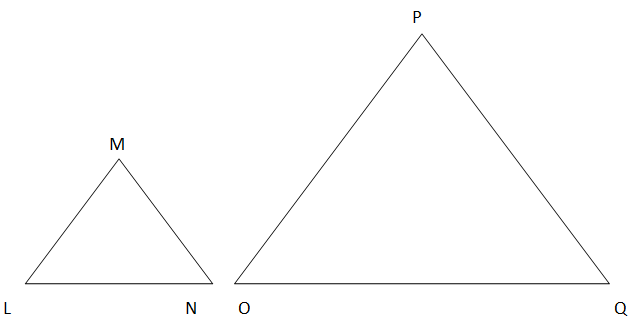Triangle A has sides of lengths #60 #, #42 #, and #60 #. Triangle B is similar to triangle A and has a side of length #7 #. What are the possible lengths of the other two sides of triangle B?
1 Answer
Jun 10, 2016
Explanation:

Let two triangles
and
By properties of Similar Triangles
- Corresponding angles are equal and
- Corresponding sides are all in the same proportion.
It follows that
There are two possibilities
(a) Base of
From proportionality
Inserting given values
(b) Leg of
From equation (1)
